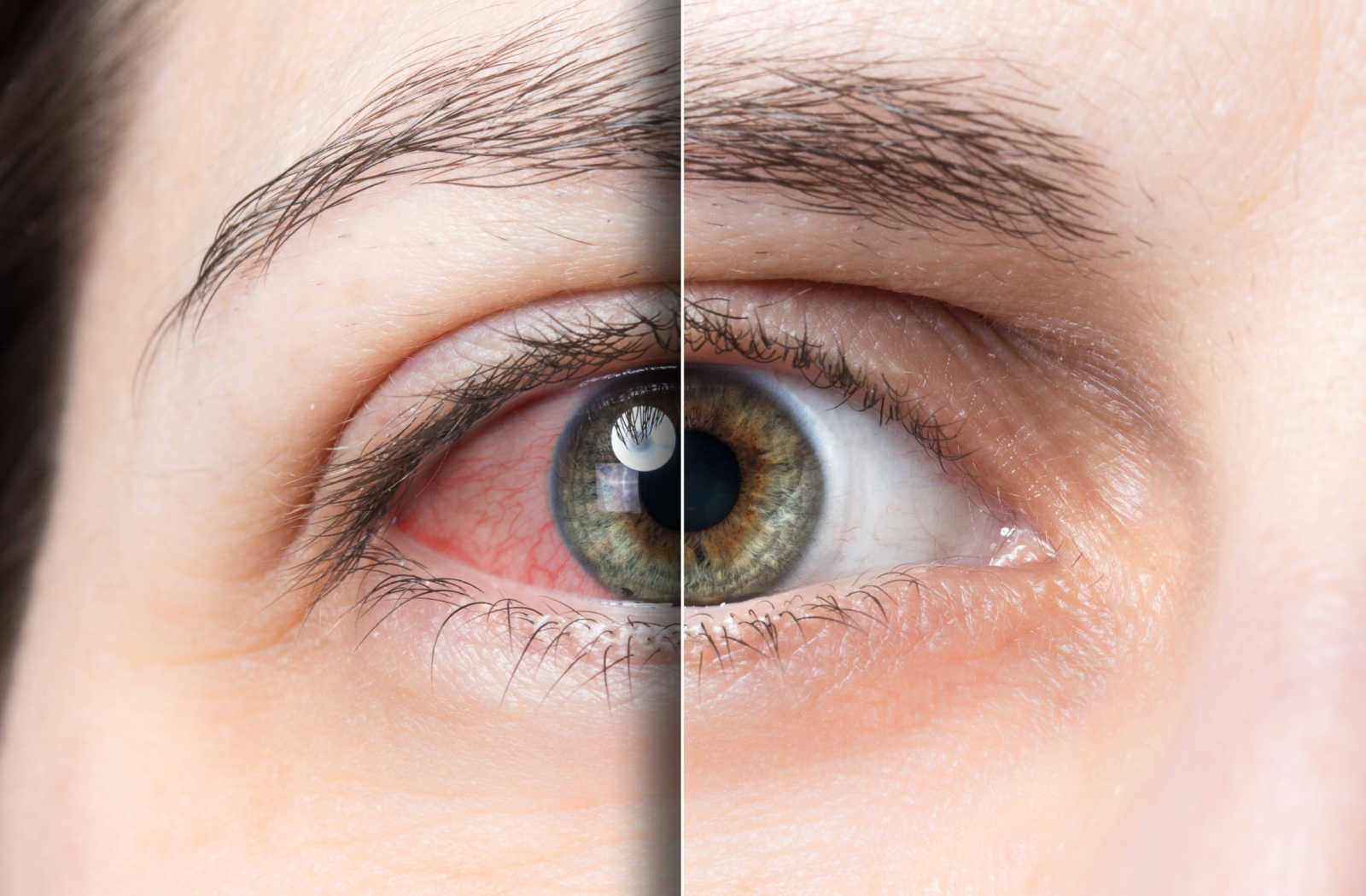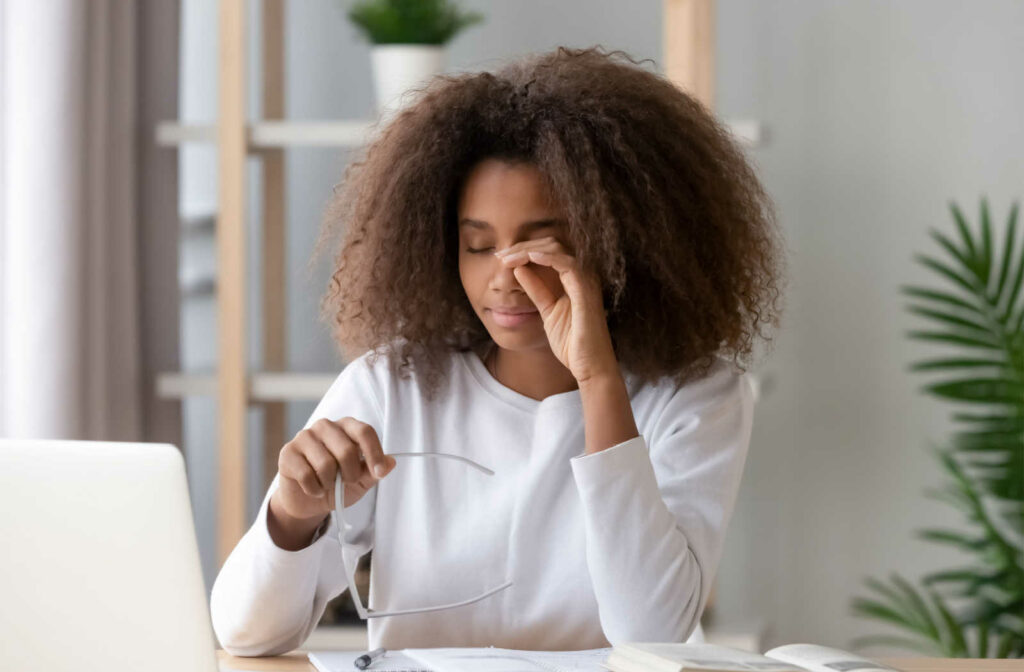Dry eye and allergies are common eye problems. If you’ve ever typed your symptoms in a search engine, you’ve likely noticed similarities between these conditions. So, is the link more than a coincidence, or can allergies lead to dry eye?
Unfortunately, allergies can contribute to dry eye. But the conditions are different. Knowing the difference can help you manage your eye health and prevent worsening symptoms.
What Is Dry Eye?
Dry eye is a chronic condition occurring when the eye’s surface receives poor-quality tears. You may even experience watery eyes, but your eyes still feel dry or irritated.
Your tears need more than water to nourish the eye’s surface, including electrolytes, enzymes, and lipids. Unfortunately, poor quality tears can evaporate too quickly, like a drop of water on hot pavement. It can also prevent tears from spreading evenly, resulting in dry spots.
If you have dry eyes, you’ll likely experience the following:
- Burning or stinging eyes
- Gritty or scratchy eyes
- Excessive watering
- Feeling like you have something in your eyes
- Light sensitivity or blurred vision
- Redness or irritation
- Stringy mucus in the corner of your eyes
You may experience only a few or several symptoms. You may even experience changing symptoms. Whatever you’re feeling or seeing, it can be challenging to navigate daily life when your eyes feel uncomfortable regularly.
Telling Apart Allergies & Dry Eye
Dry eye and allergies can share multiple symptoms, so it can be challenging to determine which is which based on how your eyes feel. However, there are also a few common differences.
Eye allergies or allergic conjunctivitis (a noncontagious form of pink eye) occur because of allergens. You experience symptoms because your body overreacts to contact with a foreign substance. Common allergens include pollen, dust mites, animal hair, and drugs.
Both allergies and dry eye can cause:
- Burning
- Dry eyes
- Irritation or redness
- Light sensitivity
- Watery eyes
But eye allergies can cause swelling, including adding puffy circles under your eyes. You can also experience additional allergic reactions, like a runny nose, congestion, or sneezing. Although allergies typically affect both eyes, you can experience symptoms in one eye.
Removing or avoiding allergens will stop eye allergy symptoms. Unfortunately, getting away from pollen, dust, and common allergens can be challenging, whether indoors or outdoors.
You may suffer from seasonal allergies or all-year-round symptoms. When your eyes are irritated and swollen, more often than not, it can interrupt tear production. As a result, you may experience corneal scarring from repeated rubbing, or your tear glands may be blocked from swelling. You have an increased risk of dry eye without relief from your allergy symptoms.
Unless you have additional symptoms, like puffy eyes or a runny nose, telling apart eye allergies from dry eye is difficult. However, an eye exam can help optometrists look closer at your eye health to determine the cause and implement appropriate treatment.

Different Causes, Different Solutions
Although allergies can contribute to dry eye, the conditions are different. Eye allergies have a direct cause, even though you may not be aware every time you come eye-to-eye with an allergen. Dry eye can have multiple, sometimes indirect, causes—including your diet, medications, and screen time habits.
Many solutions for allergies or dry eye can offer short-term relief. But determining the cause can be crucial for longer-lasting relief. For example, artificial tears add surface moisture, improving comfort or washing away surface allergens. But artificial tears can’t unblock clogged meibomian glands or reduce swelling.
Eye allergies can be managed or treated with prescription or over-the-counter solutions, including eye drops, oral medications, and immunotherapy.
A dry eye therapy consultation allows your optometrist to offer a personalized approach to managing symptoms. Minor symptoms may improve with eye drops, warm compresses, or managing digital eye strain. Symptoms caused by blocked tear glands or poor quality tears may benefit from a combination of methods, including Lipiflow or IPL treatment.
Contact lenses can often be a sore spot for allergies and dry eye. Cleaning your contact lenses can remove allergens or protein buildup. But allergens can still adhere to your lenses, causing irritation or swelling. Contact lens discomfort can also prevent quality tears from nourishing the eye.
Reevaluating your contact lens fit or style can help with dry eye or allergy symptoms. Switching to daily disposable lenses can alleviate symptoms related to protein buildup or allergens stubbornly sticking to reusable lenses.
Allergies and dry eye are chronic, with symptoms repeating or worsening when untreated. Having a treatment plan can help you achieve longer-lasting symptom relief.
Happier Eyes with Personalized Treatment
At Specialty Eye, our mission is to deliver happiness to every patient we encounter. We want to help our patients find solutions that work. Eye comfort can make a world of difference, whether your symptoms are caused by allergies or dry eye.
With a personalized treatment plan, you can experience longer-lasting relief. Book an appointment today, so we can help you see comfortably.




